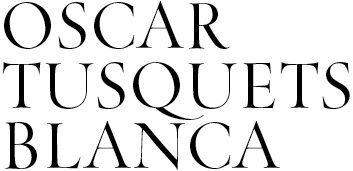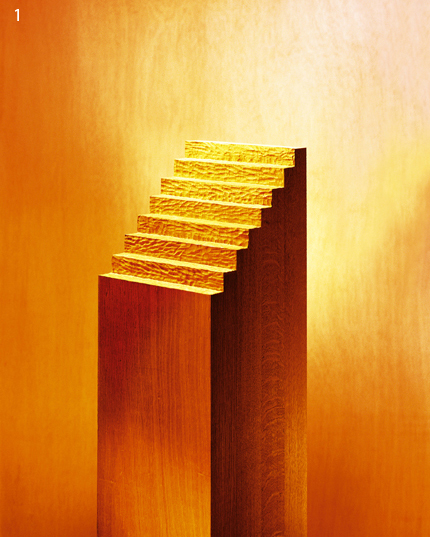
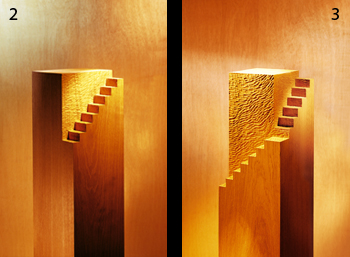
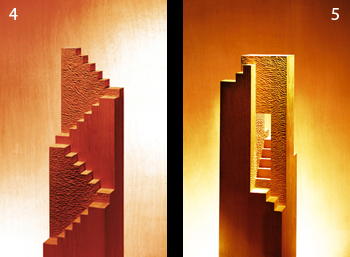
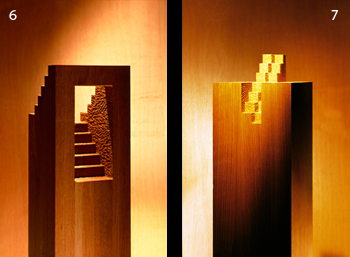
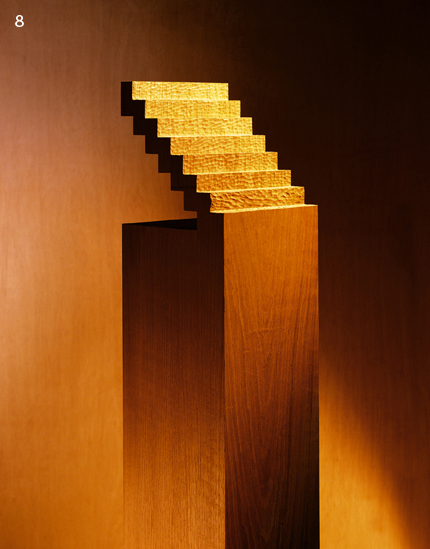
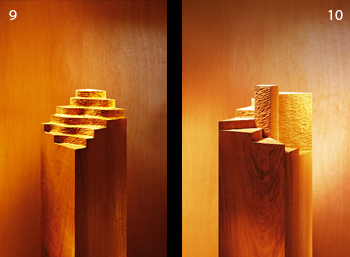
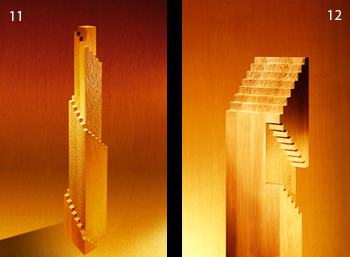
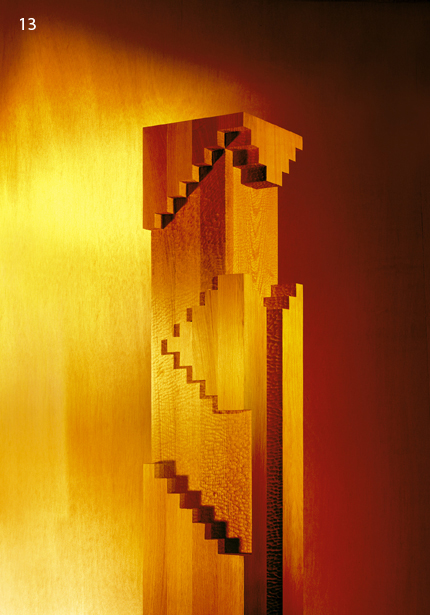
Essencial steps, 2002
Sculptures in American oak
Exhibition Réquiem por la escalera
with the collaboration of Naxo Farreras
155 x 24 x 24 cm
These are the steps by type and corresponding to the images on the left:
1. Straight staircase
It is the simplest and probably the oldest. The modest one can have three steps and can overcome a foot; the monumental one, which accesses the Roman temple, the great museum or courthouse, can have many sections and large width; the imagined by artists can be infinite: are the Odessa Steps in Battleship Potemkin, or those of Orson Welles Process.
2. Staircase that projects from the wall
The staircase is formed either by cutting the steps out of the wall or by sinking them into the wall at one end and leaving the other end free. They are either very primitive, like those that level the depressions of terraced vineyards, embedded in the wall thickness itself, or very high-tech, with independent metal or glass steps that jut out daringly, one by one.
3. The quarter-turn staircase with landing
When the straight staircase is divided into intermittent flights, it is usually because of lack of space or to adapt to the needs of the room. Sometimes the two flights are supported by the walls enclosing the space. On other occasions, they are free-standing like large, independent sculptural objects.
4. The parallel-flight staircase
The most common solution, the best space-saver, and the easiest to build. It’s the type of staircase you might find at anybody’s home, yet it is full of aesthetic possibilities when designed by a great architect.
5. The multiple-flight staircase
The staircase multiplies, ramifies and expands into a complex whole, suggesting alternarive routes.
6. The imperial staircase
The only multiple-flight staircase that is absolutely symmetrical, both in ground-plan and elevation, thus allowing the bottom step to be aligned vertically with the upper storey landing. A truly Spanish contribution to the history of architecture.
7. The samba staircase
An ingenious and ancient solution for ascending a great height in very little space. It forces one to start off with the right foot first and with a swaying movement of the hips that recalls the dance it’s named after.
8. Tha staircase in the air
Throughout history, artists have imagined staircases suspended miraculously in the air, and architects have tried to defy the law of gravity by opting for increasingly subtle materials. Steel and glass have enabled contemporary staircase designers to come much closer to fulfilling this ageold dream.
9. The random staircase
In the majority of cases, this irregular-stepped staircase is a result of adapting to the topography of a particular site. However, it may also be the consequence of the staircase designer’s choice of freer, more organic forms over excessively strict geometry.
10. The curved staircase
From the slightly curving staircase model to the spiral which coils in on itself. From the single to the double and the triple versions. These are the staircases that have prompted the most daring displays of virtuosity in design, masonry and perspective, as well as the boldest sword duels and the most spectacular descents by dance troupes…
11. Ascending to heaven staircases
images that we can find in both a miniature from a medieval codex or in the latest cartoon. Many staircases can symbolize a climb to heaven but some of them really intend it.
12. Descending to hell staircases
The staircase that drives us to death and, very probably, to hell. Paralytics hurled into the void in their wheelchairs, men who climb the steps only to be stabbed…, son many cinematographic deaths at the foot of the stairs.
13. Imposible staircases
Those that we clearly interpret as ataircases but cannot ascendí. These are the most unforgettable staircases, simply because they are disconcertingly impossible, and cannot be built, only drawn.
OTB
